artemisia gentileschi
being a female artist, what witnessing Judith Beheading Holofernes means to me, and my favorite italian films
PRELUDE
Uffizi Gallery when I was in Florence summer of 2023.
I think studying in Florence for 6 weeks was one of the best decisions I’ve ever made in my life. It fundamentally changed me and my ability to take in the world around me, quite literally because it was actually my first time spending time in Europe. The food, the art, the landscape, and the language is just incredible.
In between screenwriting and history of Italian cinema classes, we were lucky to be able to visit the Uffizi Gallery in the middle of peak Italian summer (now it’s easily one of my favorite art museums alongside the DIA in Beacon, NY)! There I was surprised to see one of my favorite paintings Judith Beheading Holofernes painted by Artemesia Gentileschi. I wrote this short piece for an assignment in class exploring a work of art and how it related to the scripts we were writing in class. I removed some sections about the script I was working on but kept what witnessing the piece meant to me, as well as my deeper research into the context of the work itself.
SMALL BITES
Before we begin… some of my favorite Italian films that we watched in class. Studying Italian cinema made me appreciate the rich historical contexts these films came out of and the independent movie-making spirit during this time.
🌘 LA NOTTE
La Notte, directed by Michelangelo Antonioni, is a film that follows a day in the life of an unfaithful married couple as their relationship steadily deteriorates in Milan. This psychological drama explores themes of alienation and disillusionment in modern urban life. I believe that this film is also one of Sofia Coppola’s favorite films!
🎪 LA STRADA
La Strada, directed by Federico Fellini, is a poignant Italian drama that follows the journey of Gelsomina, a naive young woman sold to a brutish circus strongman named Zampanò. As they travel the Italian countryside performing together, Gelsomina endures her husband's coldness and abuse, until she finds a kindred spirit in Il Matto, the carefree circus fool, leading to jealousy and conflicted feelings from Zampanò.
🏭 IL DESERTO ROSSO (THE RED DESERT)
Il Deserto Rosso is a 1964 psychological drama directed by Michelangelo Antonioni, starring Monica Vitti. Set in an industrial landscape, the film follows Giuliana, an unstable woman struggling with her mental health as she navigates her relationships with her neglectful husband and his more empathetic friend, Corrado. Giuliana and Corrado begin an affair, but it does little to quell Giuliana's existential fears, and her mental state rapidly deteriorates.
🥊 BONUS: ROCCO E I SUOI FRATELLI (ROCCO AND HIS BROTHERS)
Directed by Luchino Visconti, Rocco and His Brothers is set in 1960s Milan and follows an impoverished Italian family from the south seeking opportunities in the big city. The story focuses on two brothers, Rocco and Simone, whose rivalry over a prostitute named Nadia threatens to tear the family apart. As the soft-spoken Rocco and the brutal Simone pursue Nadia in their own ways, the film explores themes of family disintegration in the industrial north of Italy and the experiences of southern migrants during this time period.
WORDS
Artemisia Gentilschi’s Judith Beheading Holofernes.
Witnessing Artemisia Gentilschi’s Judith Beheading Holofernes shocked me with an overload of emotion. Having studied art history my Freshman year, this was one of my favorite paintings that I was looking forward to the most at the Uffizi Gallery. But I don’t think sitting in the lecture hall in the Silver center at NYU ever prepared me for what I was to see in person. Chiaroscuro, the technique of contrasting lightness and darkness, never looks quite right on the projected screen or even in online pictures. At the museum, I noticed the folds of the fabric, the fabric’s ability to reflect light, the tufts of hair between Judith’s grasp as she holds Holofornes down, and the small flecks of paint reflecting the blood staining the sheets. The thing about paintings such as this one is that they demand to be seen and witnessed and observed and noticed. It demands for a private discussion between the viewer and the artist, a link that connects the witnesser and imagination, the depths of emotion.
The sky bridge in the Uffizi Gallery.
Artemisia Gentileschi was born in Rome and with a birthright to fufill. Her father Orazio Getileschi was a well-known Italian painter and major follower of Caravaggio. After her mother passed away at age 12, she looked after her younger siblings while also training as an artist in her father’s workshop. As American art historian Linda Nochlin reiterates in her famous essay "Why Have There Been No Great Women Artists?" (1971), many female artists exist throughout the history of art, but many of them through the privilege of having a parent (most often the father) whose involvement in the arts helped launch their careers or at the very least offer support to foster their talents to take it beyond a cute hobby that women took up to impress their future martial prospects. In fact, her father was well aware of her talents and showed pride in his letter correspondences. Even once saying: “Having studied the profession of painting, after three years she had practiced so much that I can now say that she has no peers, having created such works of art that perhaps even the most important masters of this profession cannot achieve.”
Linda Nochlin’s essay “Why have there been no great women artists?” I highly recommend finding a PDF of this essay on Google!
Artemisia’s distinct style speaks to Caravaggio’s influence. Not only her ability to create chiaroscuro effects, but tenebrism and dramatic lighting, the high contrast between brightly lit subjects and darkly lit subjects. In Judith Beheading Holofernes, the action is happening now, in media res. The subject, story and scene was often explored in the past, even Caravaggio depicting his own version of this event. While many previous versions depicted Judith as a timid character, reluctant to kill Holofornes, artists such as Gentileschi and Caravaggio, reversed that narrative. Judith’s story is a tale of of Israelites heroism against their oppressors. Judith is a biblical heroine who murders and decapitates the general Holofernes after sleeping with him for the sake of her tribe who was under siege by him and his army. Many versions of this story, some sexualizing Judith in a more erotic sense where she’s unclothed. For some a representation and dissonance between feminine desires and masculine aggression. She could even be seen as Mary or an Eve, in a biblical sense. The details vary, does she hold “womanly” virtues and strength? What power dynamics and gender identity does the portrayals of Judith reveal? Is she a femma forte or a femme fatale? The complexities of Judith is relatable to a lot of questions I’ve been raising on my own about the female characters in the script I’m working on. I fear that often women are reduced to tropes (especially in the Bible) but the religious influence on this script is incredibly strong, so it truly is a blessing to be in Florence and explore these different dichotomies where many of the Renaissance paintings have these strong, powerful religious motifs.
In contrast, this is Caravaggio’s depiction of Judith committing this violent act. Notice Judith’s posture, distance of Holofernes, the expression on her face, the rigidness of her body.
Compared to Caravaggio’s depiction, Gentileschi’s painting shies away from the idea that Judith was reluctant and timid to partake in the decapitation. Judith is quite literally distanced from Holofornes in Caravaggio’s version, she’s almost leaning over and about to topple over in the action. In Gentileschi’s painting, the tension and urgency is heightened. Judith holds the sword with a ferocity and her expression is powerful. Judith is quite literally holding down his head and leaning into the action alongside her maid who assists her. The lines of the painting (the arms, eyelines of the women, direction of the sword) all draw the eye to the visceral, violent center - the blood splatter and the face of the Holofornes (whose eyes are even still open!). Gentileschi makes me question how do we really react in the face of violence or moments of critical choices? How do we build those narratives that feel honest and truthful, ugly, gory moments and all under a dramatic light and visceral manner?
'The Advantages Of Being A Woman Artist', Guerrilla Girls, 1988 on display at Tate Modern.
Most notable is Artemesia’s “gory details” (although I think this mostly surprises people because she is a “Woman painter”, capital W). The painting provoked a strong reaction and was actually denied from being exhibited in a gallery. Through Gentileschi’s male painter friend was she able to receive payment from a member of the Medici family for its completion. In terms of it’s scandalous nature, it extends far beyond just the subject or manner of the painting itself. It’s arguable and in some sense unfortunately mostly known due to the corelation in Gentileschi’s own personal life. When Gentileschi was 18, she was raped by one of her father’s frequent collaborators and her art teacher, Tassi. She continued having sexual relations with him under the promise of subsequent marriage. When he did not marry her as promised, her father Orazio brought him to trial in 1612. During the trial, she was forced to give evidence under torture. People often read her experience with the artwork in question. I personally believe that her achievements are overshadowed by the story of her rape and trial. She began painting at the age of 15 and throughout ther lifetime many of her paintings feature women from myths, allegories, and the Bible, including victims, suicides, and warriors. She specialized in historical paintings rather than focusing on still life or portraits. It’s my understanding that there was some aspect of the narrative that she was interested in. She wanted to tell stories with naturalism techniques of the time that she’s known for. It’s cinematic and narrative and dramatic (re: tenebrism) but also so honest and real and full of emotion.
I can’t wait to go back to the Uffizi one day…
Live, love, art! Go to a museum!
Skylar xx
![[banchan]](https://substackcdn.com/image/fetch/$s_!bzBv!,w_80,h_80,c_fill,f_auto,q_auto:good,fl_progressive:steep,g_auto/https%3A%2F%2Fsubstack-post-media.s3.amazonaws.com%2Fpublic%2Fimages%2F4020a6b2-7d75-439c-8957-0777f2e5fe65_1200x1200.png)

![[banchan]](https://substackcdn.com/image/fetch/$s_!bzBv!,w_36,h_36,c_fill,f_auto,q_auto:good,fl_progressive:steep,g_auto/https%3A%2F%2Fsubstack-post-media.s3.amazonaws.com%2Fpublic%2Fimages%2F4020a6b2-7d75-439c-8957-0777f2e5fe65_1200x1200.png)

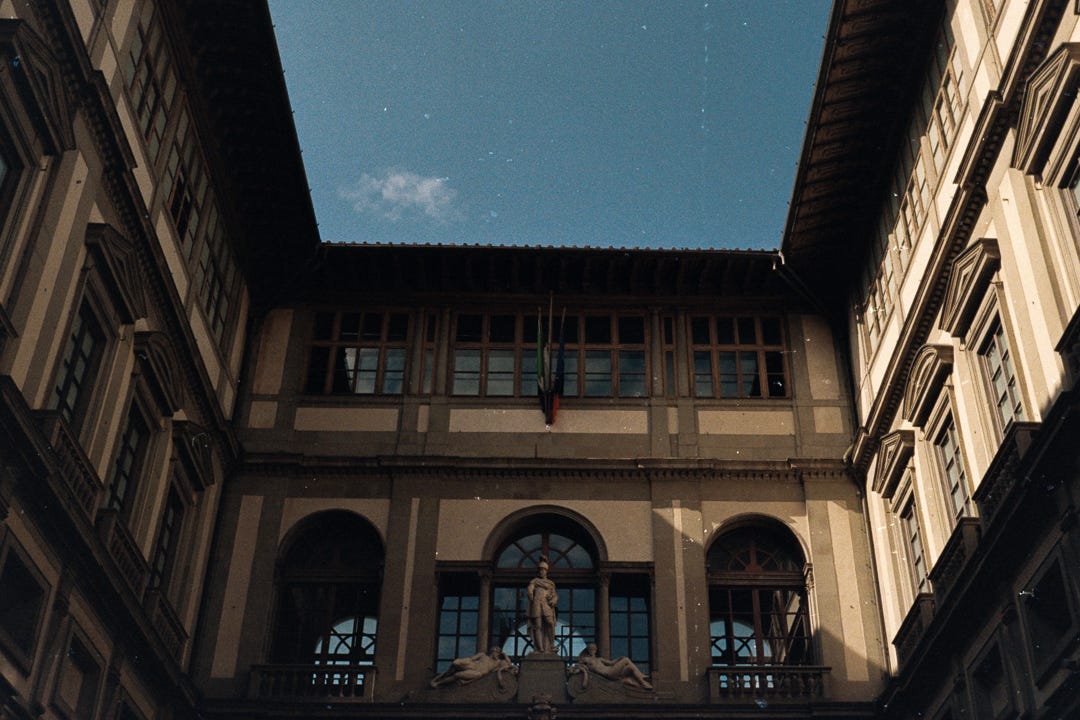
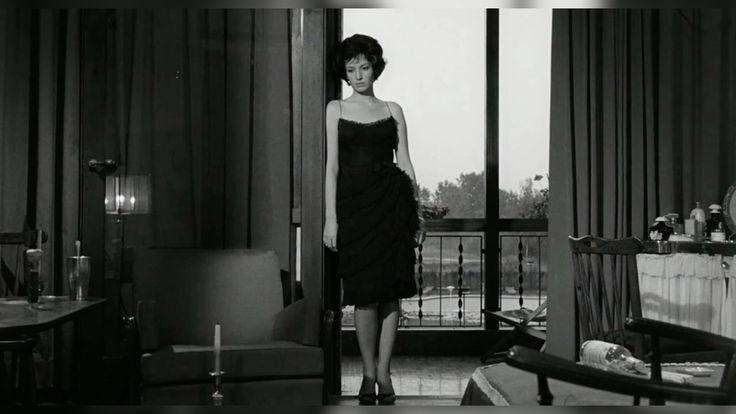
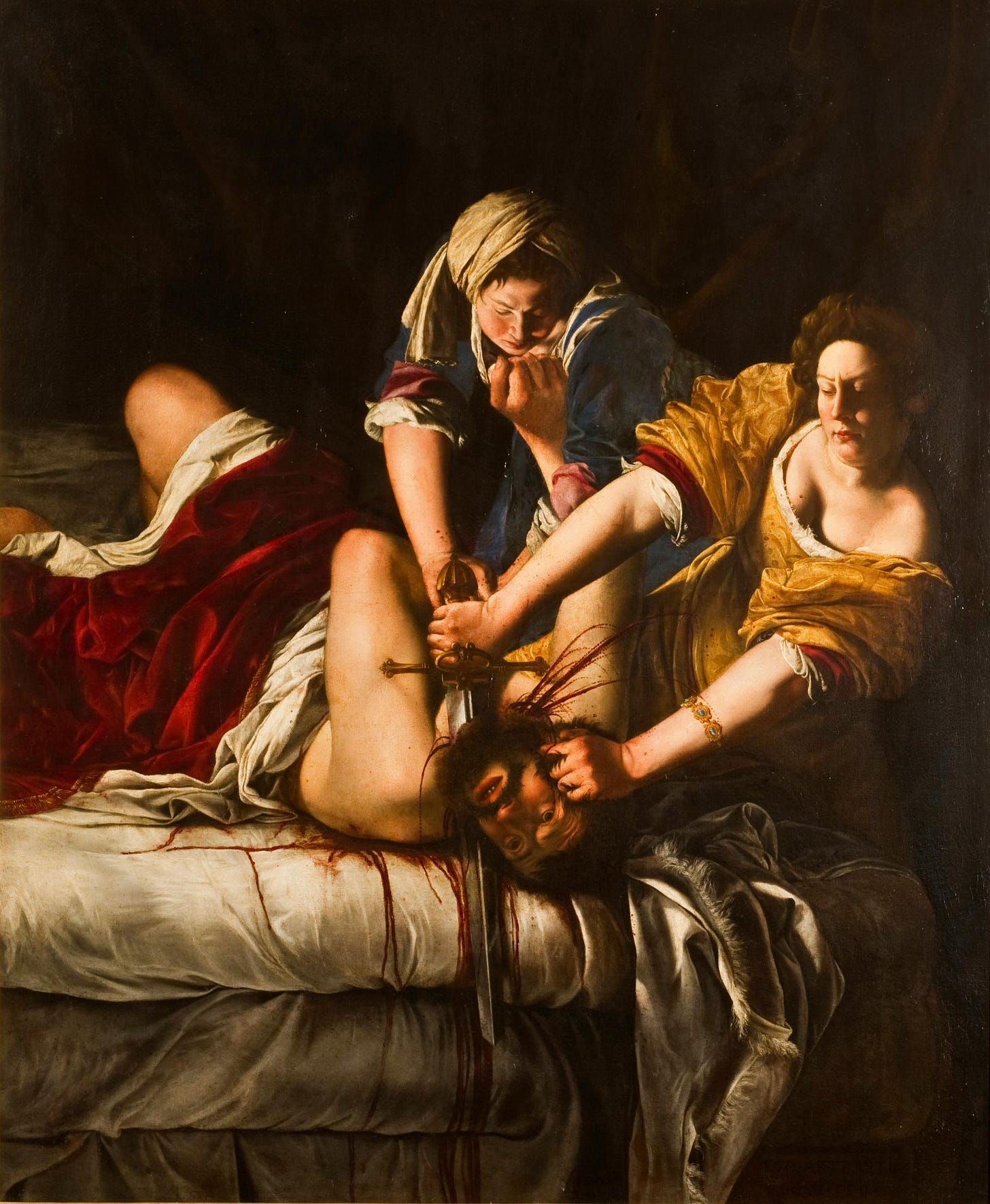

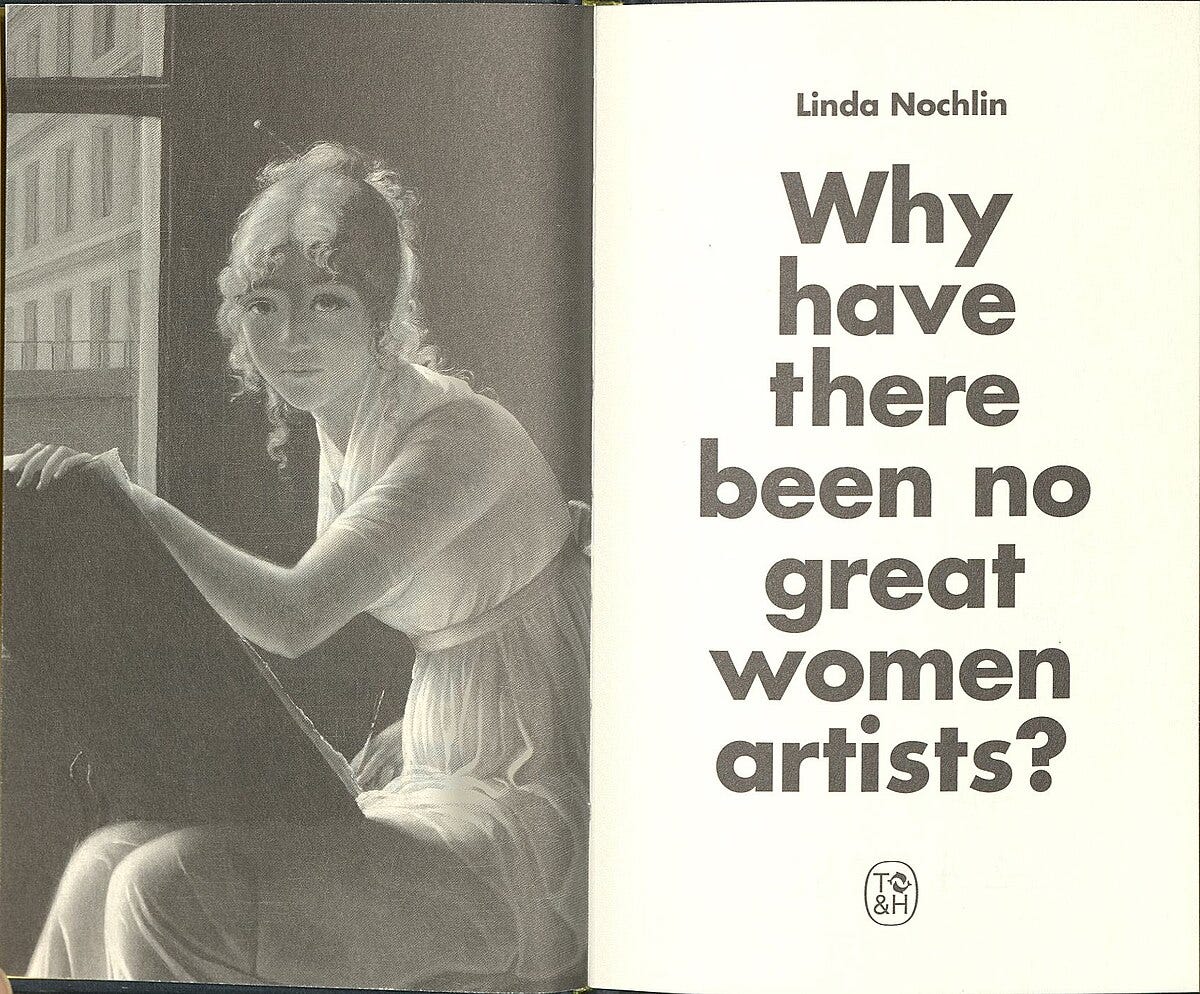
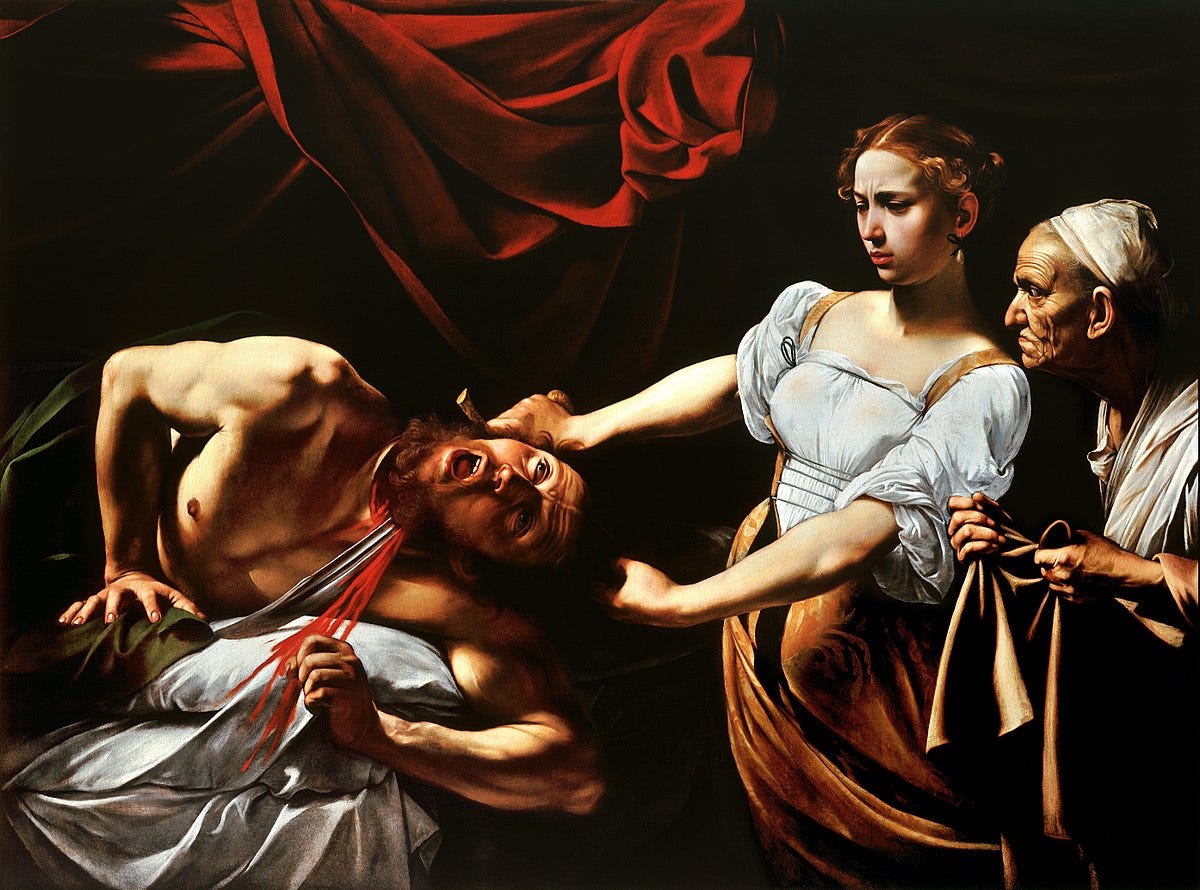
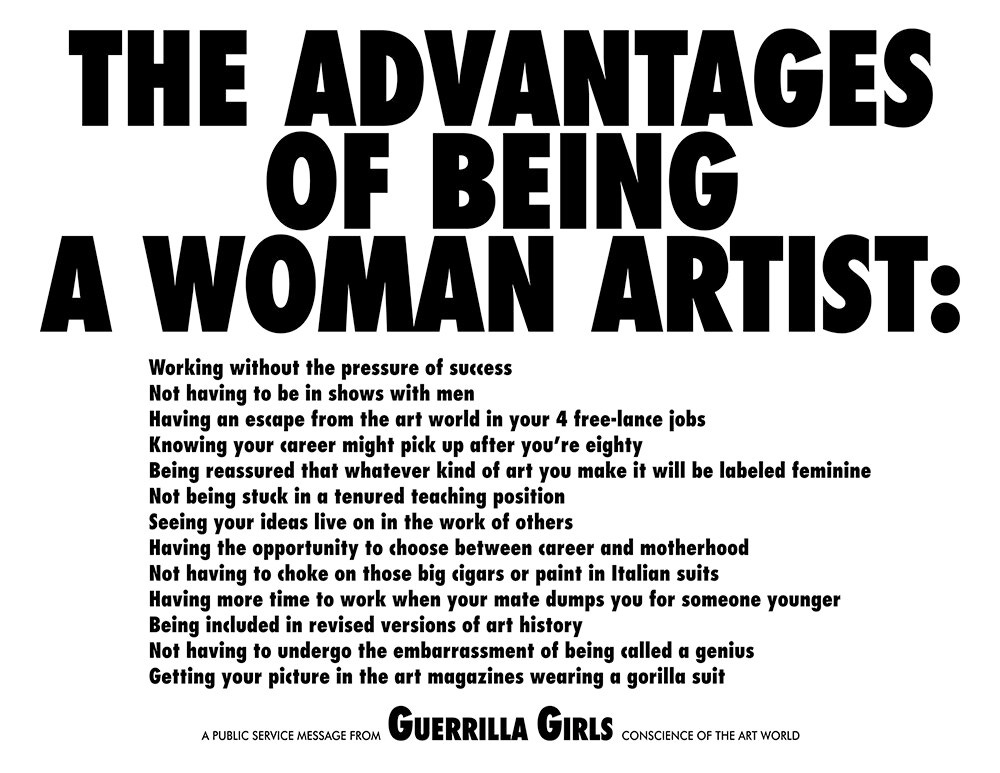
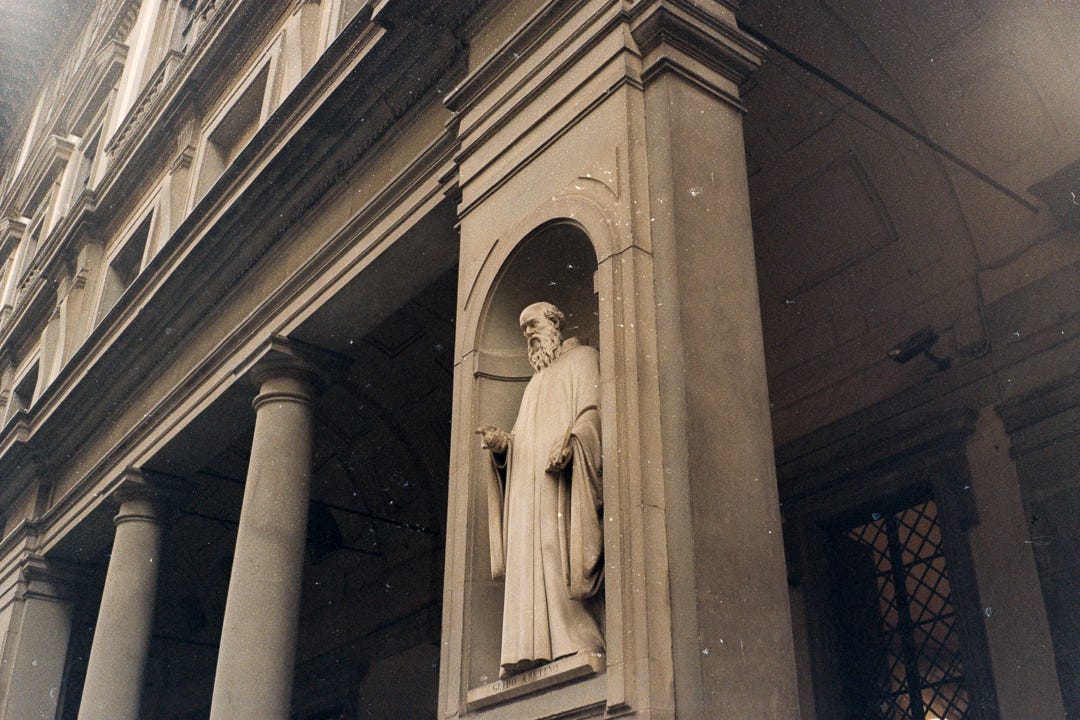
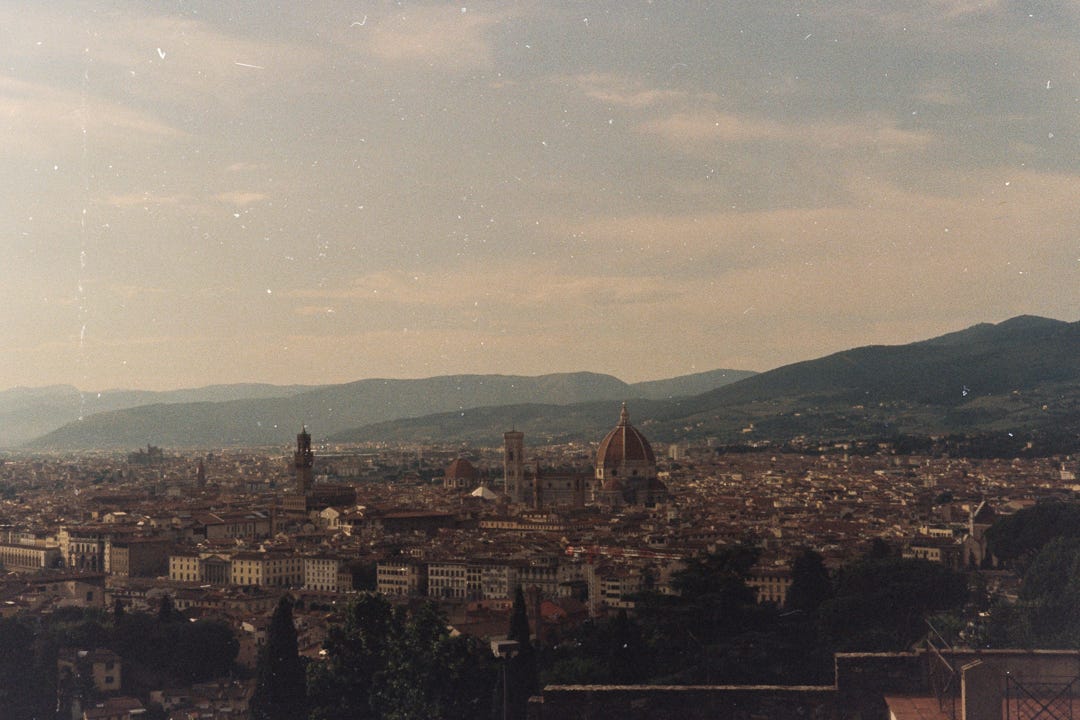
Citations:
- https://www.uffizi.it/en/artworks/judith-beheading-holofernes
- https://www.britannica.com/biography/Artemisia-Gentileschi
- https://www.nationalgallery.org.uk/artists/artemisia-gentileschi
- https://www.getty.edu/news/artemisia-gentileschi-the-woman-the-artist/
- https://www.jstor.org/stable/26303770
- https://cz.tranzit.org/file/Linda_Nochlin__Why_have_ther.pdf
This is such a great read. I recently watched La Notte and we are having an Italian cinema screening next weekend I am super excited to watch Cinema Paradiso and La Dolce Vita. Hoping I get to visit Florence soon.